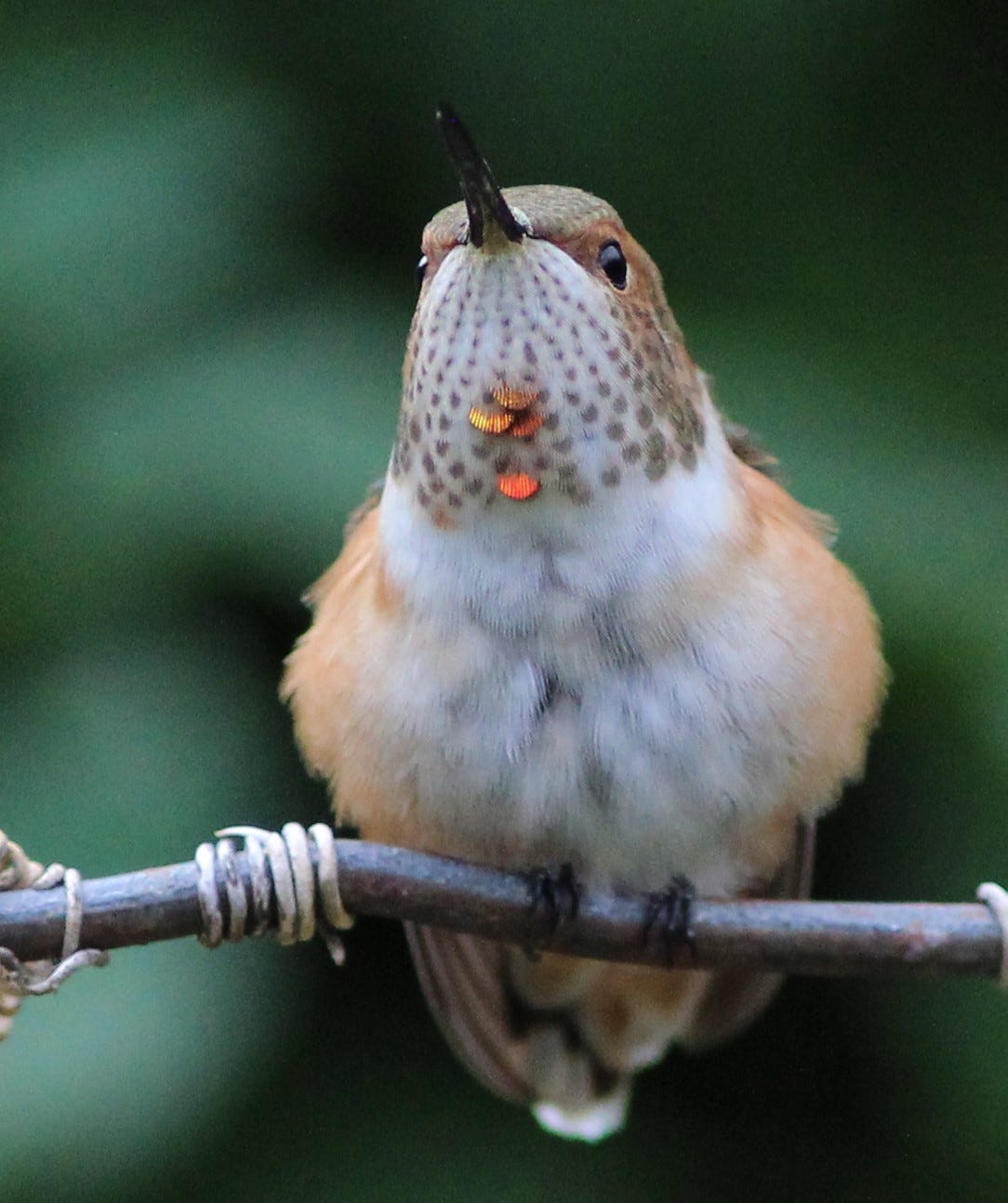
Day 527 of the Pandemic (August 27, 2021)
At that rare time, when a hummingbird trains its eyes on you, you’ll recognize something that for all the world looks like deliberation. Like you’re being measured...and found lacking.
Chuparosa. The rose sucker. Twenty-two million years evolving. A family of New World birds (Trochilidae) more than 300 species strong. Familiar micro-machines that weigh a penny or two and run on sucrose and oxygen. Protean wings carrying tiny hearts that beat 21 times a second all the way from the tropics to the temperate north and back again each year. A round trip of 8000 miles for the rufous hummingbird.
And I am blessed with a dozen that grace my yard.
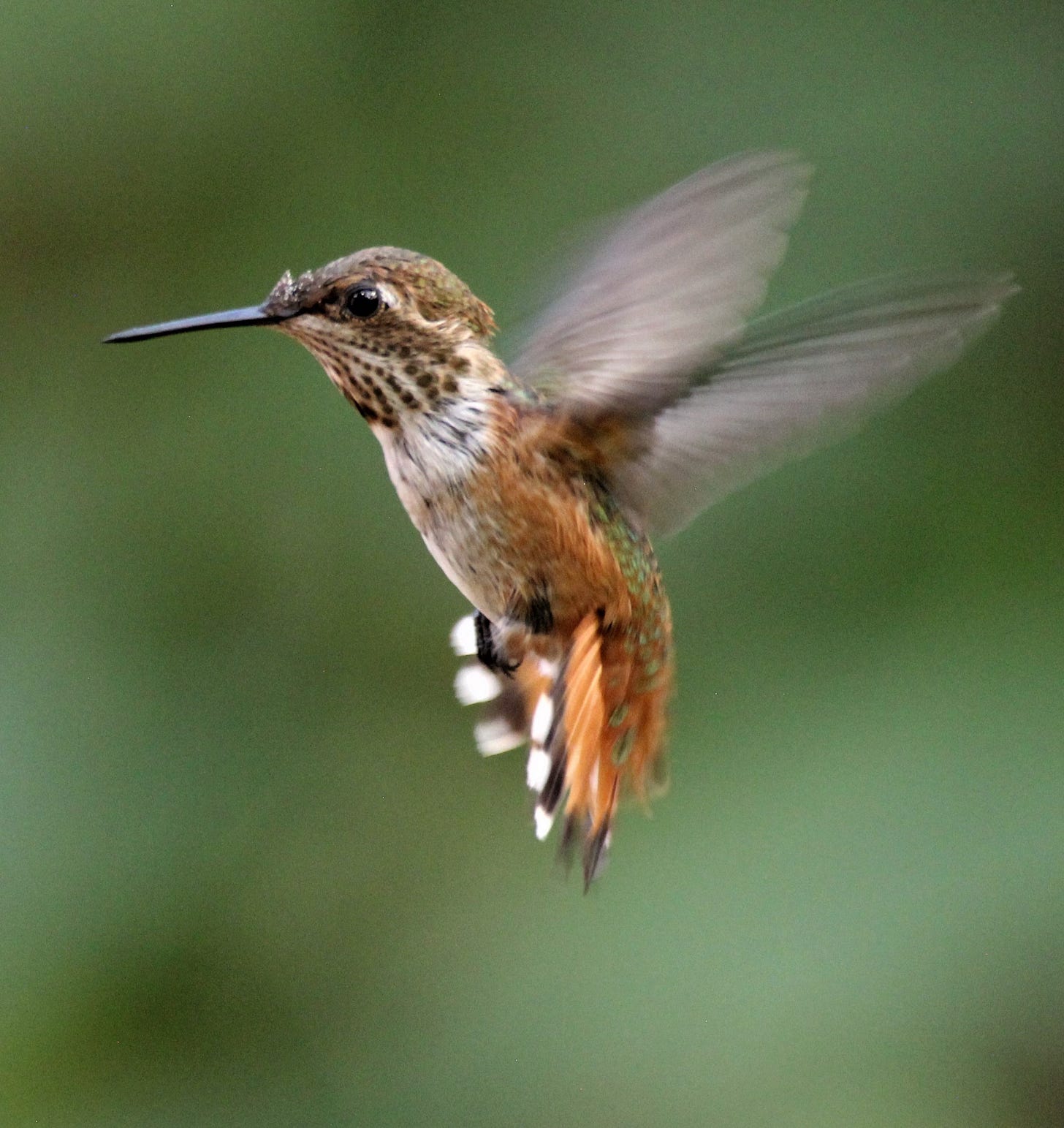
This morning, a terrific dip in hummingbirds. The yard still attracts 6-7 species, but the numbers are low. I do, however, check off my first verified Allen’s hummingbird in 12 years. Probably because I’m paying attention. And photographing the tail flares of every rufous hummingbird lookalike that visits the feeders.
It's all in the tail. Specifically, two feathers in the tail, the R2s on either side of the two center feathers (R1s). Rufous hummingbirds, male, female, and immature (the latter of which I’m mostly seeing now), show a slight pinch near the tip of these tail feathers. Allen’s have no such notch. Also, their outer tail feathers (R5s) tend to be narrower than the rufous.
Thus, lots of photos of tails.
Allen's hummingbirds winter in the mountains of central Mexico and migrate north to breed in a narrow strip of coastal forest and chaparral that stretches from California to southern Oregon. I see them in my yard mostly during their August return trip to Mexico when a few stray east into this part of Arizona.
The Allen’s hummingbird is #12 for the year, the most hummingbirds the yard gets...so far. Until I see a white-eared or berylline hummingbird.
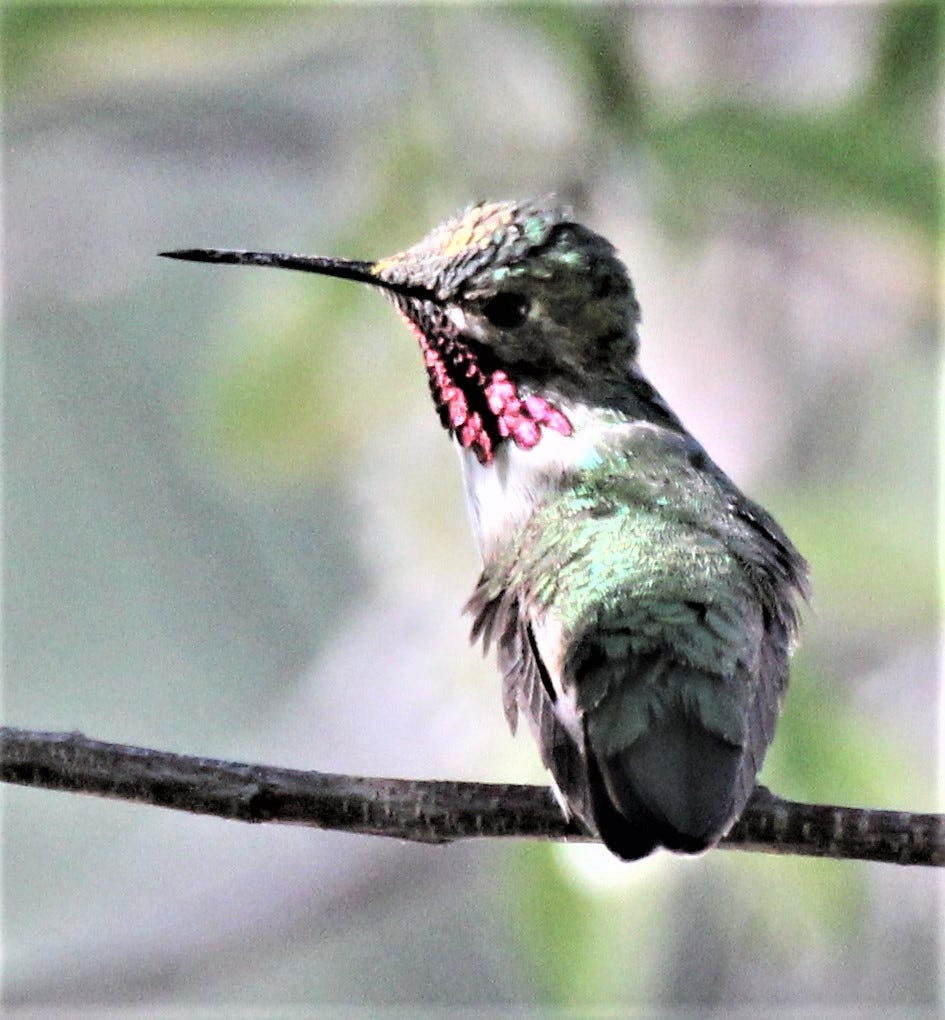
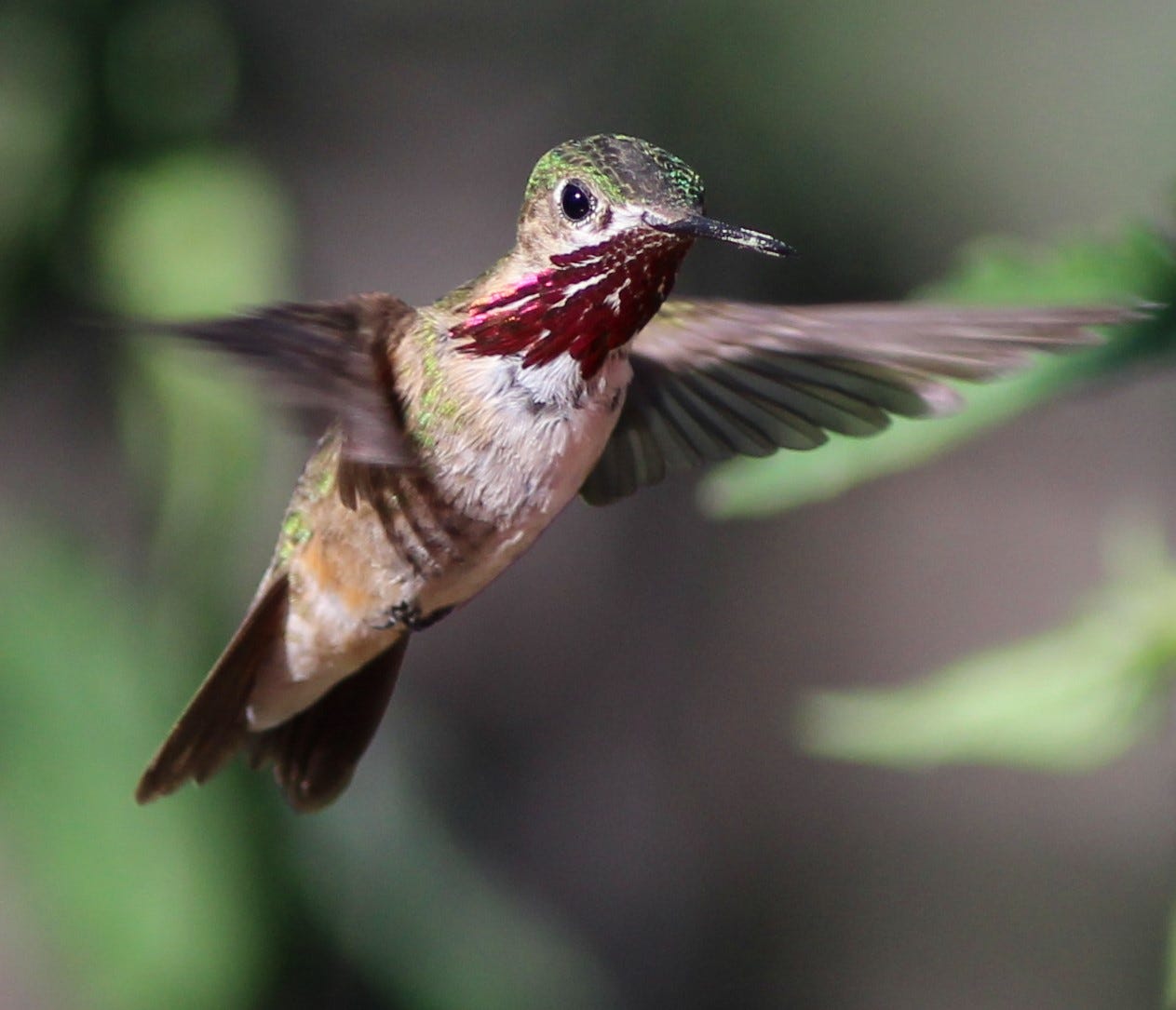
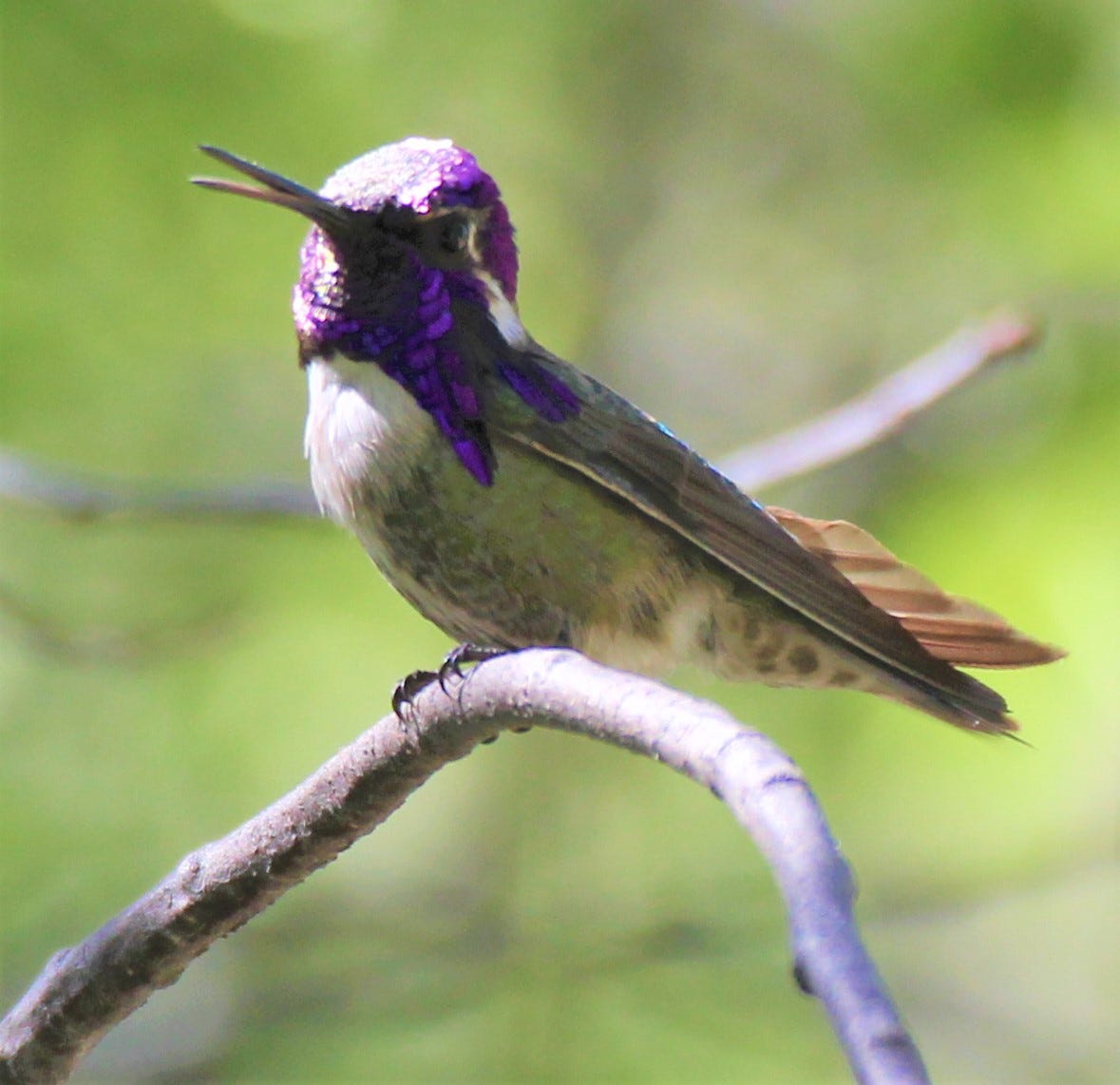
I fill the feeders in the morning after swarms of long-nosed and long-tongued bats have drained them during the night. Only a few hummingbirds dip their long bills into the sweet solution. This time last year, dozens of hummingbirds waited on me impatiently (the wife insists that the birds follow me around when the feeders empty). My neighbors and even friends as far away as Flagstaff have similar complaints—going through a few cups of nectar each day instead of gallons.
Record fires are turning to ash millions of acres of forest in northern California and Oregon. Climate change in action. Audubon scientists project that the rufous hummingbird could lose 71 percent of its range as the planet warms. Already, the blazes stand in the way of the fall migration.
I could be seeing the effects in my yard.
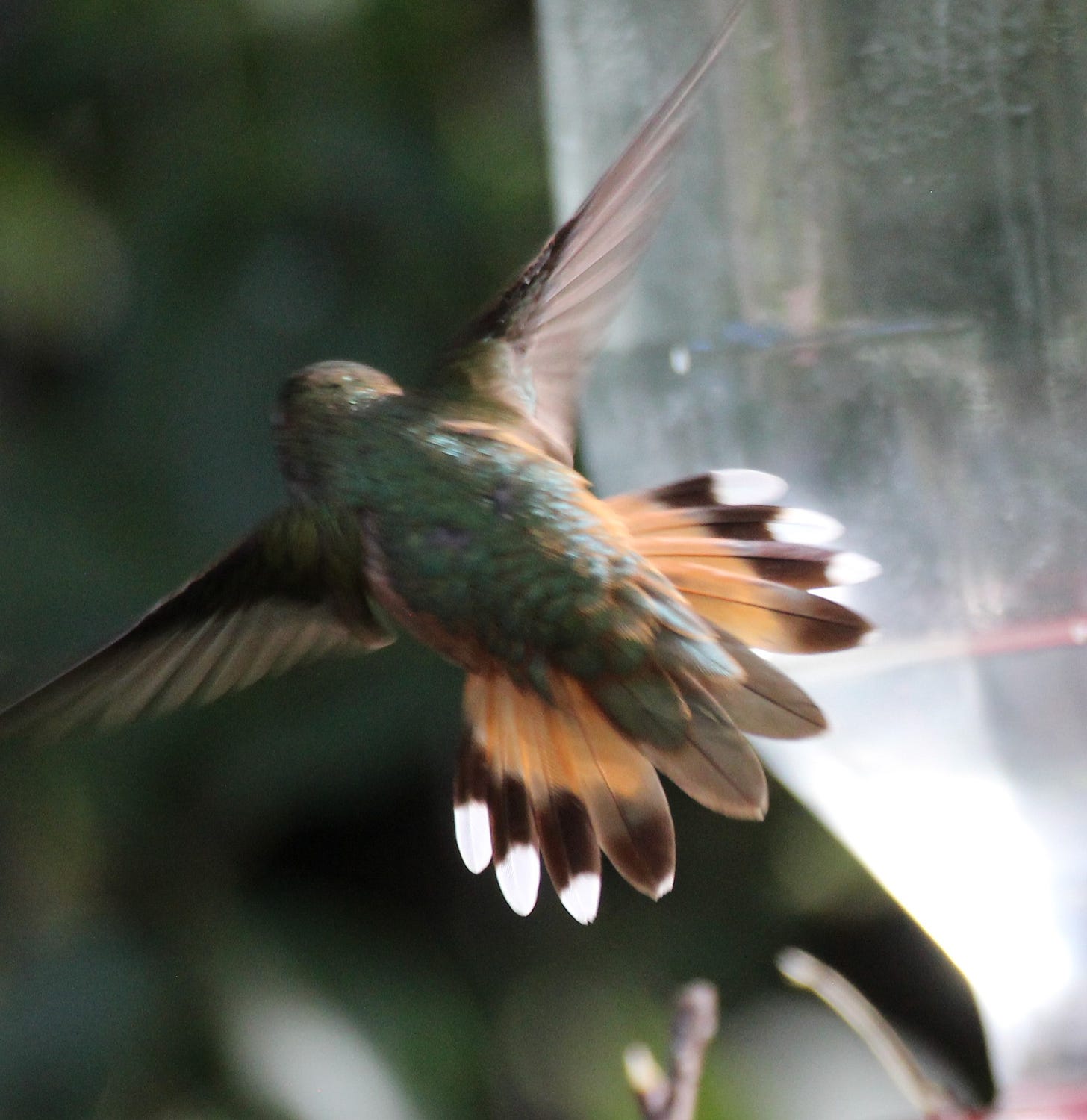
Thanks for subscribing! More to come!



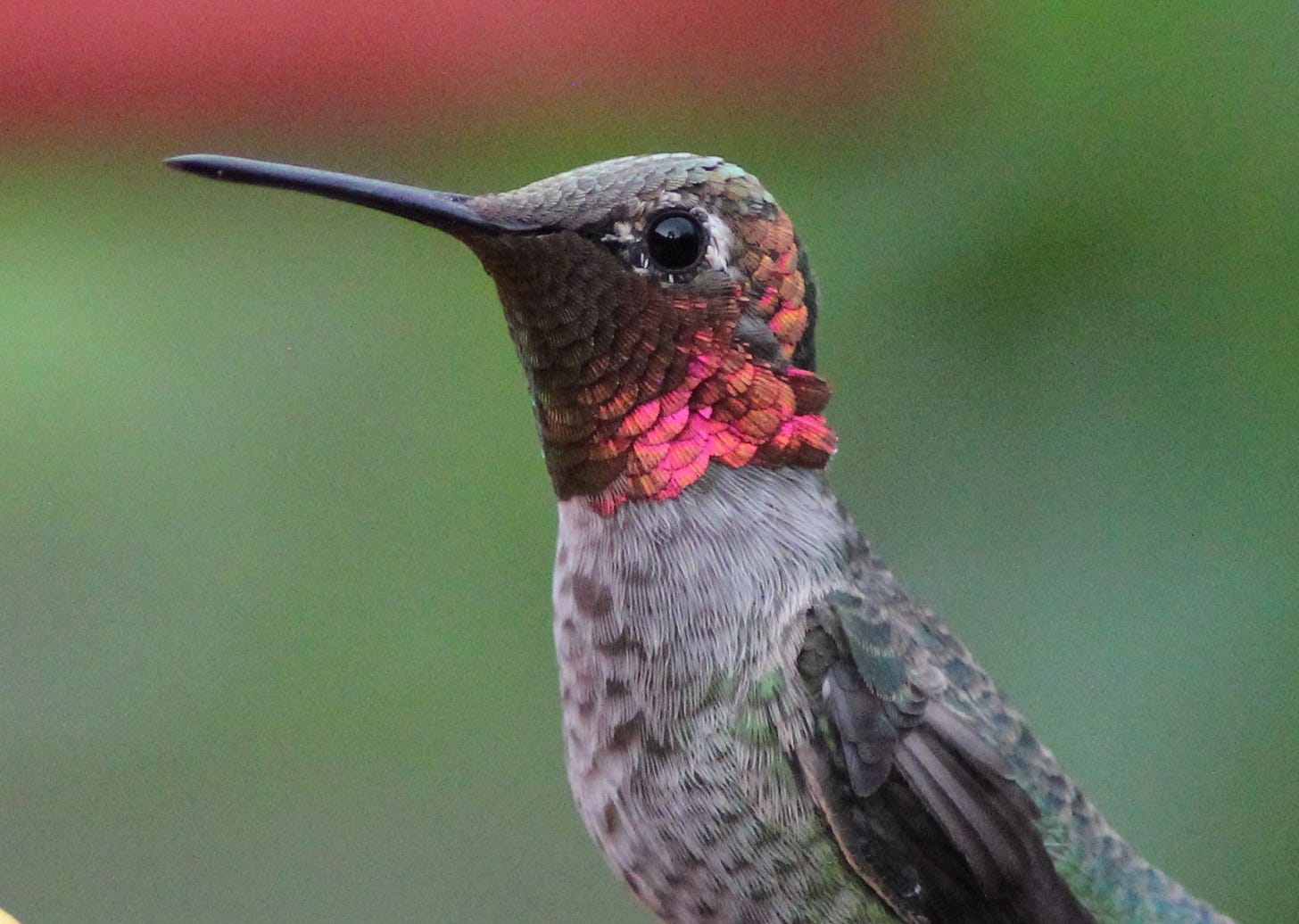

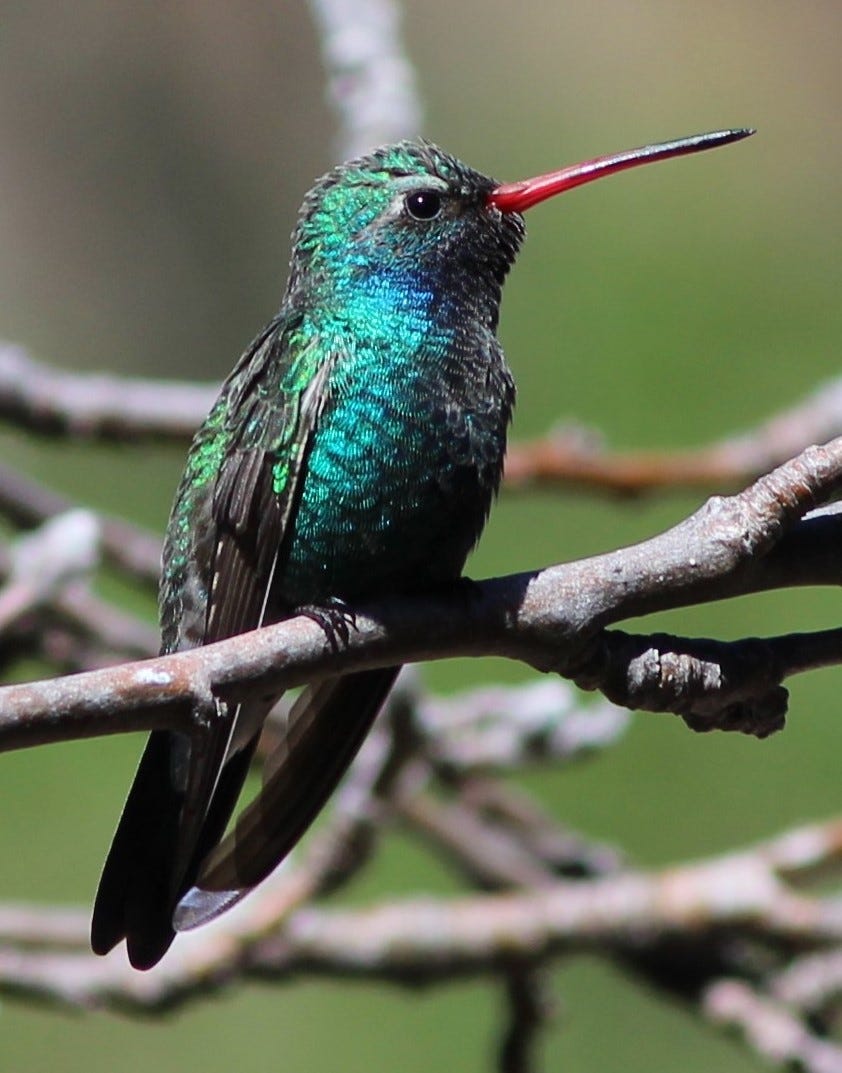
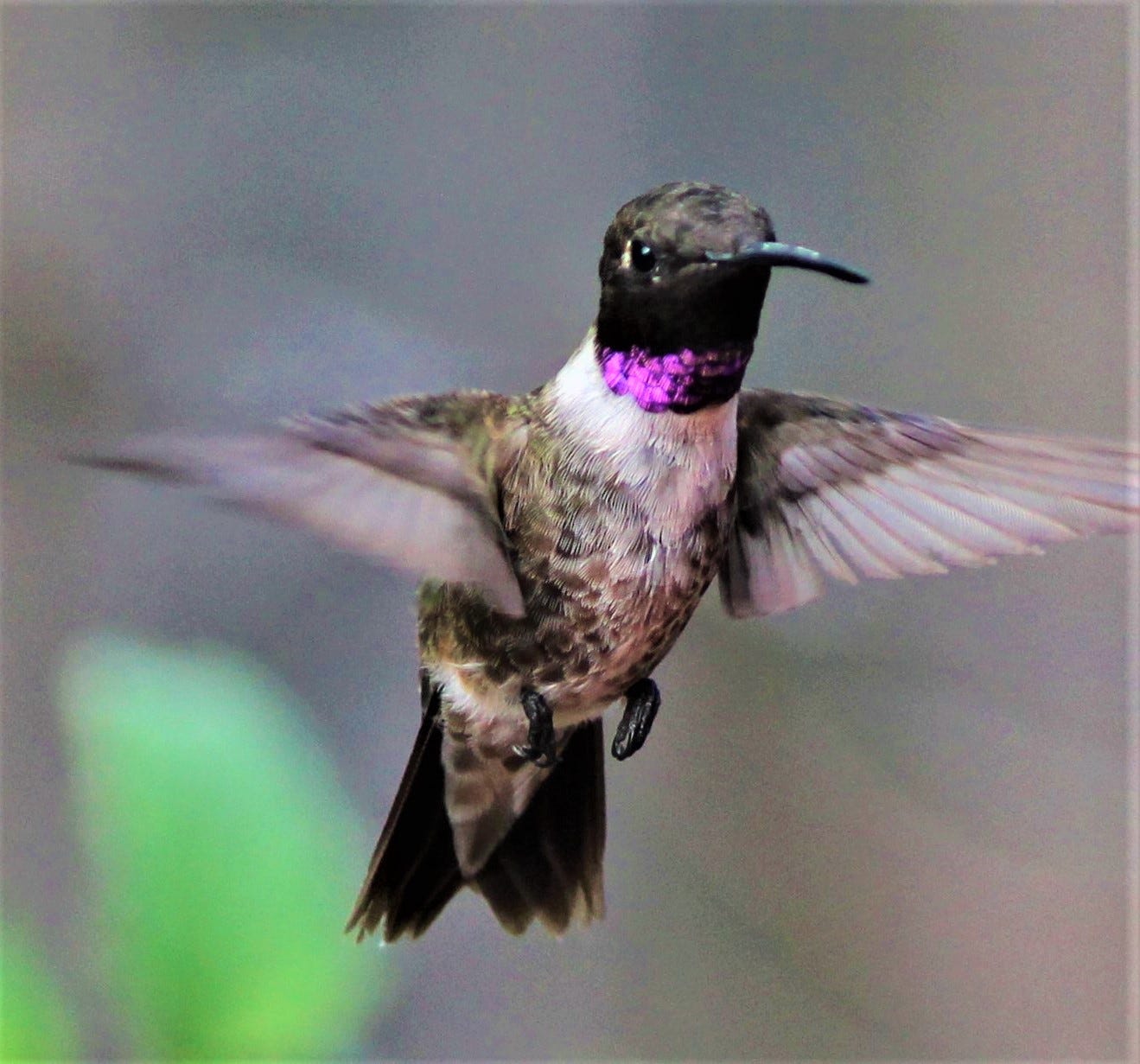
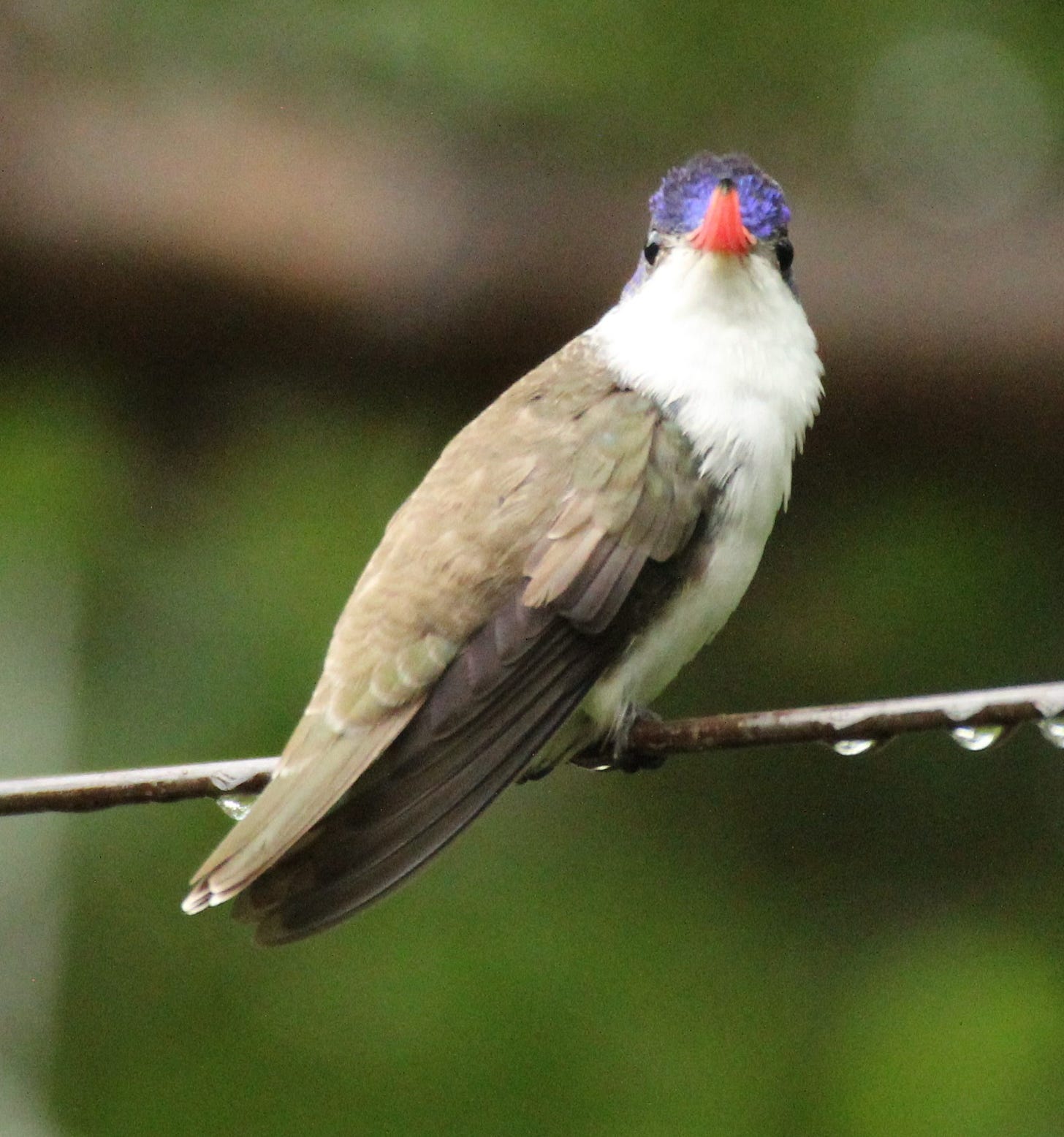
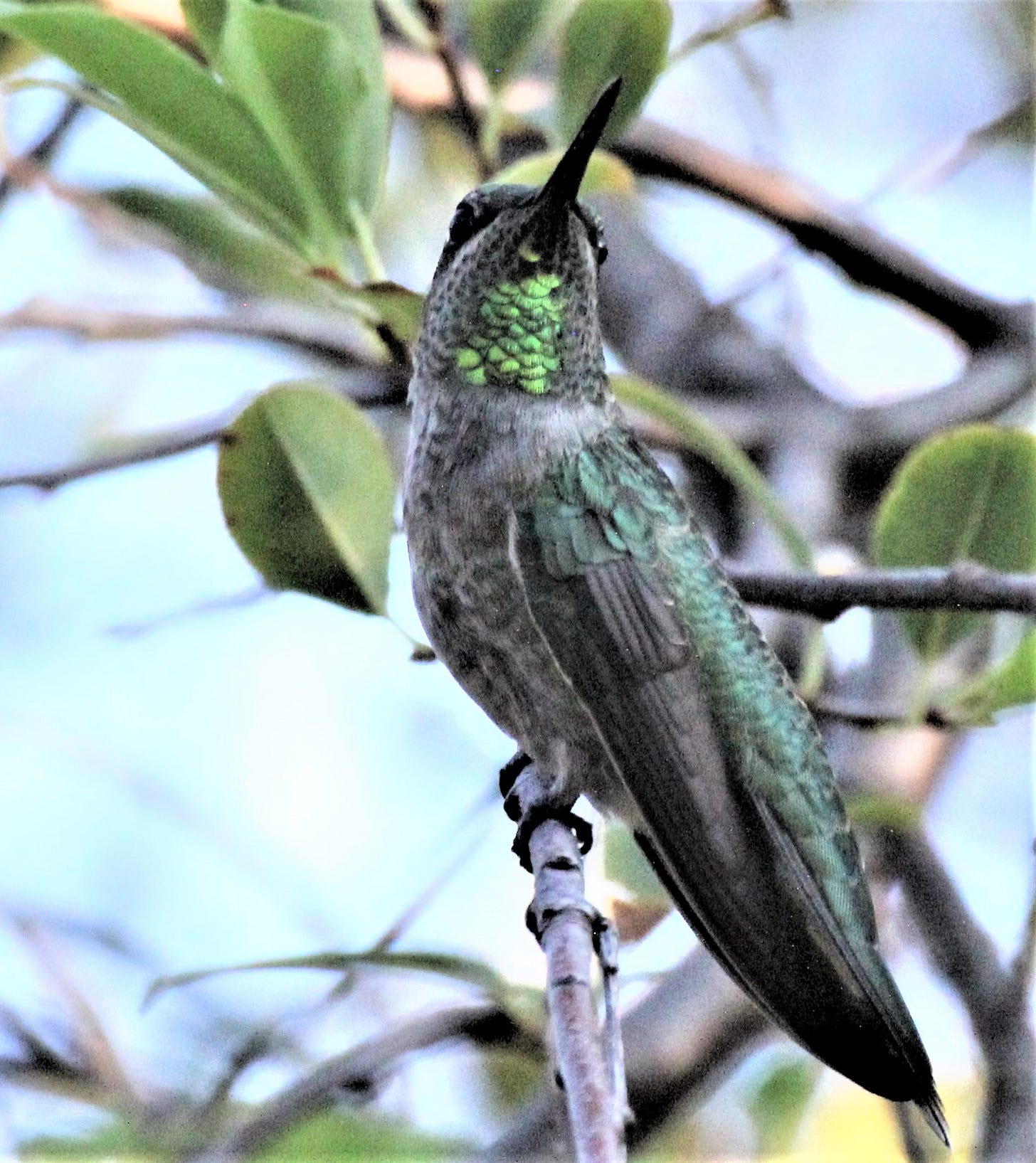

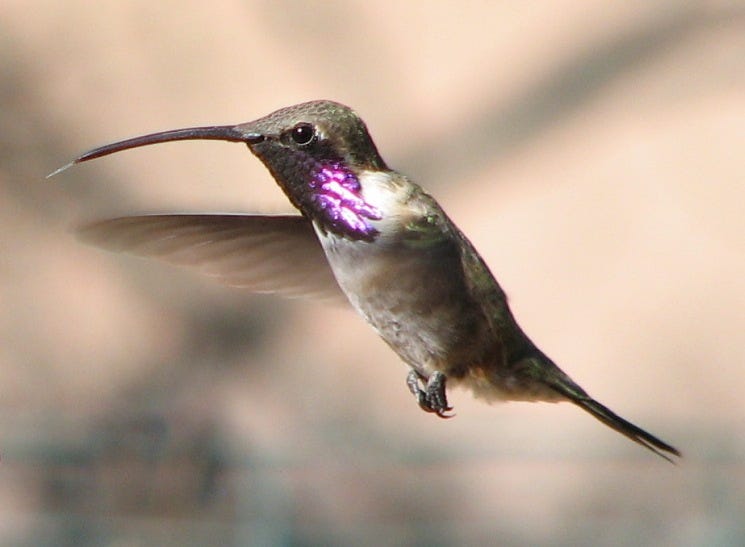
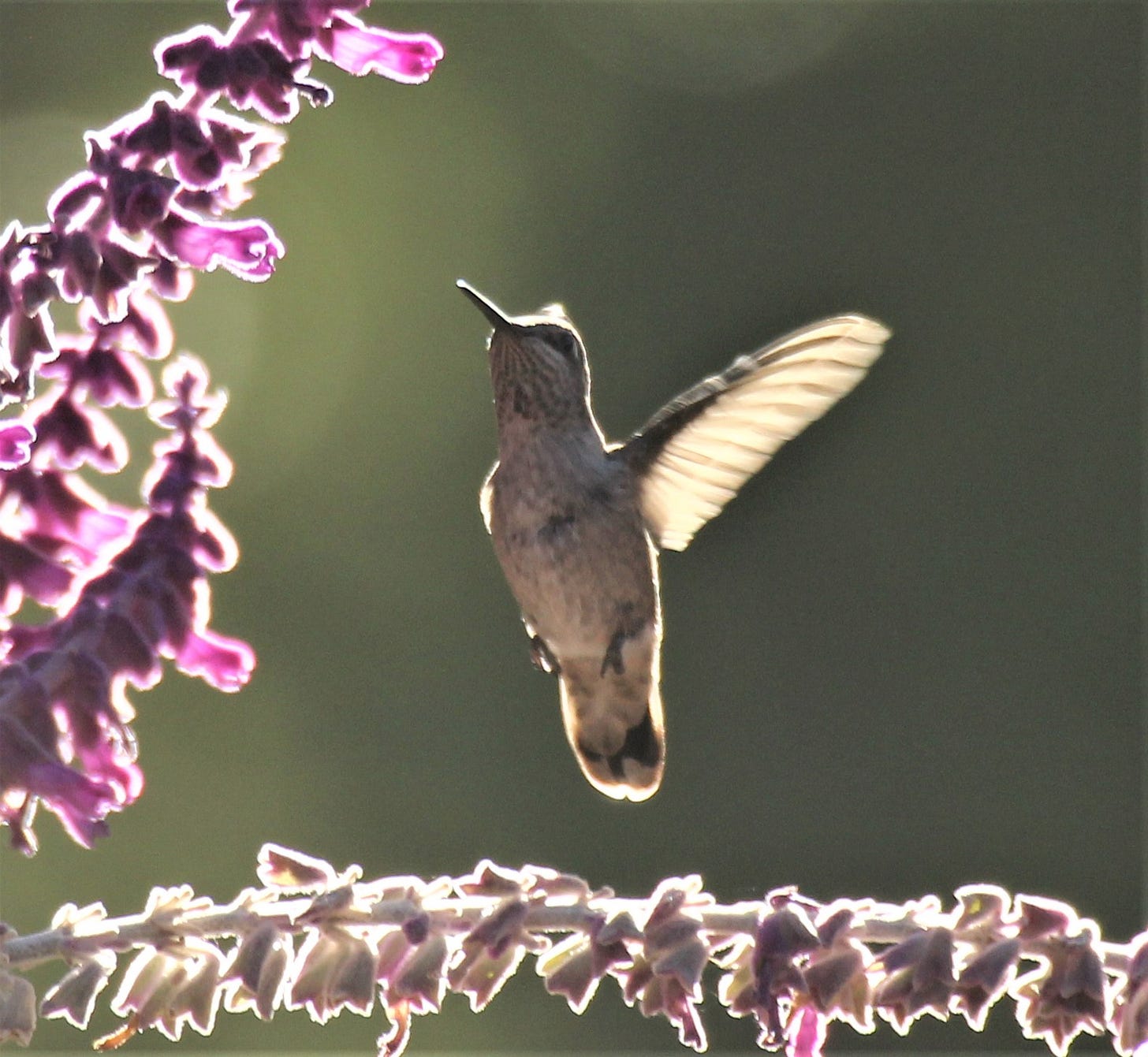
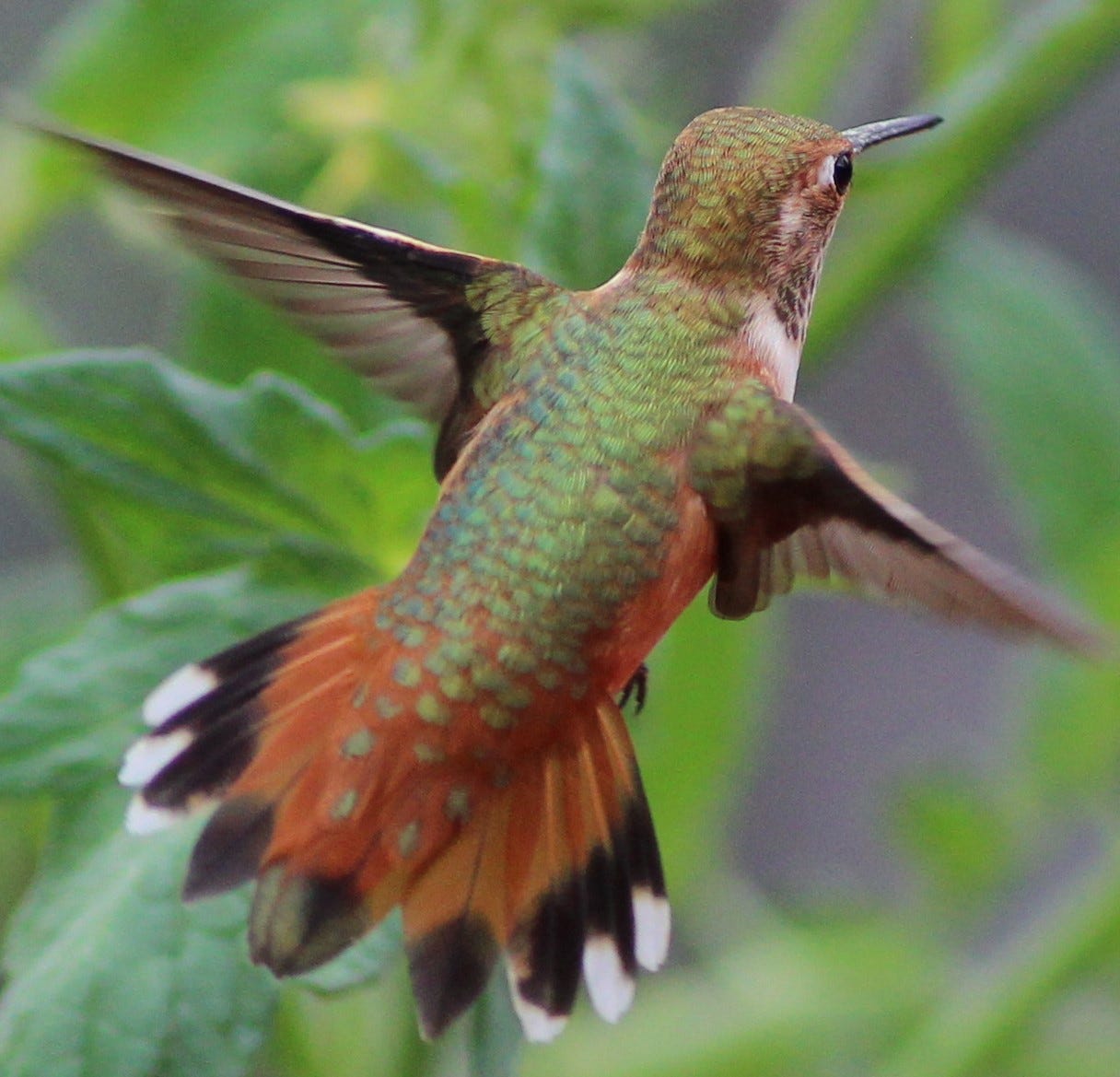
This is so amazing, thank you for sharing it! Here we only have 1 kind of hummingbird and they don't share well, even yards, lol. So it's lovely to see and learn about them here!
The quality and variety of birds every week are quite outstanding. Very lucky to see these beautiful creatures and document them. Loving this newsletter. Well done Ken!